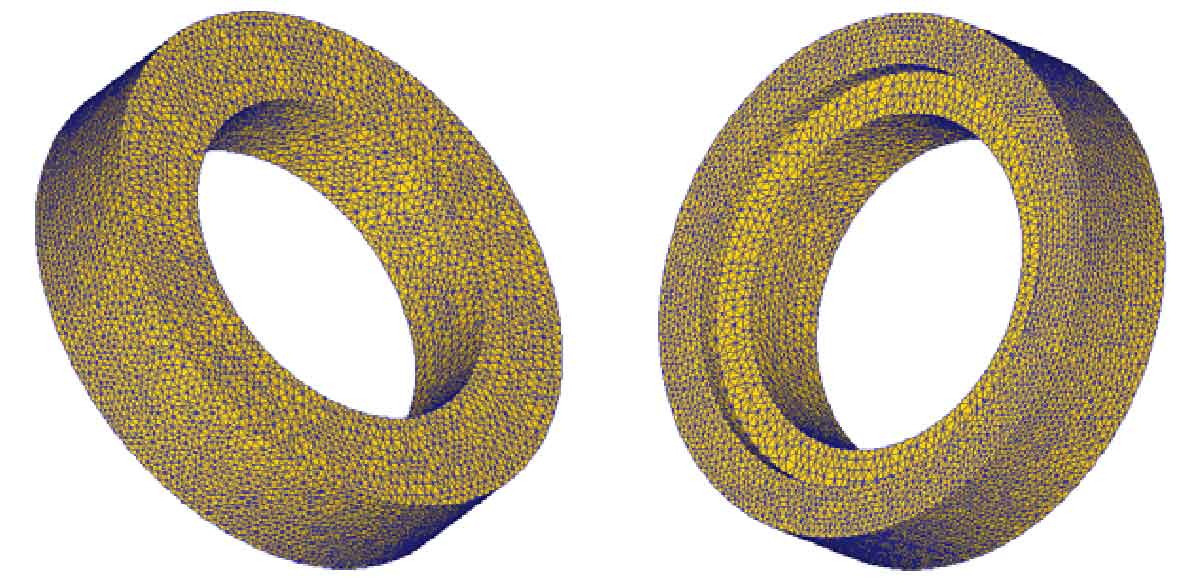The mesh generation program of DEFORM-3D can divide the geometry into tetrahedral elements, and its mesh generation methods can be divided into two types:
(1) Relative mesh: users only need to set the number of meshes to be divided, and the system will automatically generate meshes. In the process of numerical simulation of precision forging of spiral bevel gear, the number of meshes is constant.
(2) Absolute mesh: the user needs to specify the minimum size of the divided unit and the ratio of the maximum size to the minimum size, and the system determines the number of meshes.
Usually, the smaller the size of the divided grid element, the more accurate the results obtained by simulation, but at the same time, it will increase the simulation time, reduce the work efficiency, and have higher requirements for the computer. Combined with the shape and size of spiral bevel gear, the requirements of hot precision forging process and the computing power of computer, it is decided to adopt the form of relative mesh division, and the initial mesh of blank is set as 80000, as shown in the figure.
In the process of forming simulation, the material will flow with the precision forging simulation of spiral bevel gear, which is easy to lead to the serious deformation of the grid element attached to it, resulting in the sharp decline of calculation accuracy, and even make the precision forging simulation process of spiral bevel gear impossible to continue. DEFORM-3D system can solve this problem well. When the mesh is distorted to a certain extent, the mesh re division program will automatically re divide these meshes to generate high-quality new meshes, so as to ensure the continuation of the simulation.

